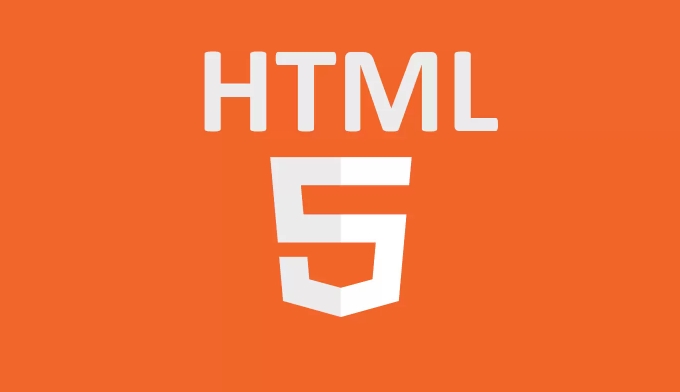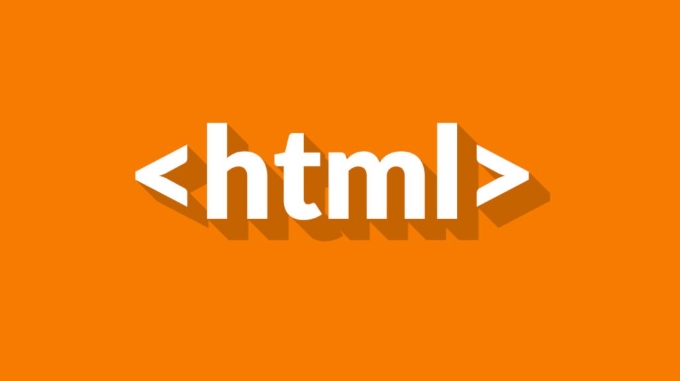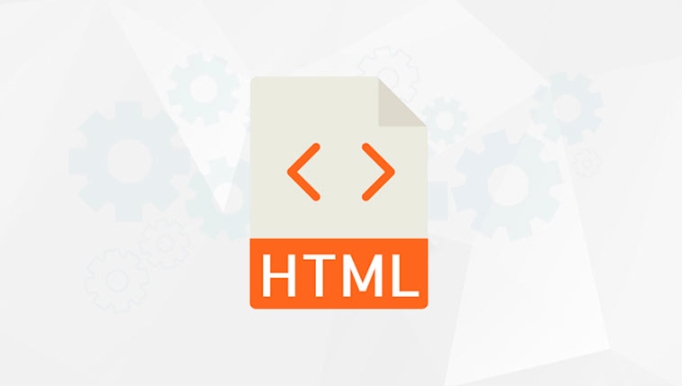The placeholder property is an auxiliary function in HTML forms for input box prompts. It displays light text when the input box is empty, and it will automatically disappear after the user starts input. The correct way to use it is to use it as a supplementary description rather than replace the label tag. The specific steps are: 1. Use label and placeholder at the same time, such as ; 2. Avoid labeling required items or providing key information with placeholder; 3. Control the length of the prompt text to keep it concise; 4. Adjust the style through CSS to ensure compatibility; 5. Applicable to input scenarios with clear formats such as email, search boxes, etc., the password boxes should be used with caution.

In HTML forms, placeholder property is a very practical little feature. It can provide a brief prompt for the input box to help users understand what to fill in. Although it looks simple, it can make the form experience more friendly if used properly.

What is placeholder ?
placeholder is an attribute of <input> and <textarea></textarea> tags, which is used to display a light text as a prompt when the input box is empty. For example:
<input type="text" placeholder="Please enter your email">
This text will automatically disappear when the user starts typing. Its purpose is not to replace labels, but to assist in explaining the input format or example.

How to use placeholder correctly
Many people mistakenly think that placeholder can replace <label> , but this is not recommended. Because the placeholder disappears after the user starts typing, the prompt content can no longer be viewed. And label always exists, which can better assist users in understanding the meaning of input items.
The correct way is to use label and placeholder at the same time . for example:

<label for="username">Username:</label> <input type="text" id="username" placeholder="Example: john_doe">
In this way, the user can see the meaning of the field and get prompts for input styles.
Common misunderstandings and precautions
Do not use placeholder as required instructions
For example, if you write it asplaceholder="必填", this is very unreliable because the user may skip it without seeing it.Avoid too long prompt text
Placeholder has limited space, so it is recommended to control it within one or two sentences. Too long text will make the interface appear crowded and easily truncated.Don't rely on placeholder to provide key information
Because some browsers or helpers may ignore it, or the user may have entered content and cannot see the prompt.Pay attention to style compatibility
By default, placeholder text color is lighter, and the display effect of different browsers is slightly different. If you want to unify the style, you can modify it through CSS:::placeholder { color: #999; font-style: italic; }Which input scenarios are suitable for use?
Examples of fields with clear formats such as email, phone number, username, etc.:
placeholder="example@mail.com"Search box example:
placeholder="搜索商品名稱"Password input box (use with caution)
Example:placeholder="至少6位字符"
Note: Try not to rely solely on placeholder prompt rules in the password box, it is best to cooperate with additional instructions.
In general,
placeholderis a small detail that improves the user experience, but cannot be overly relied on. Only by reasonably matching labels and other prompts can the form be clearer and easier to understand. Basically that's it.The above is the detailed content of HTML `placeholder` Attribute for Input Fields. For more information, please follow other related articles on the PHP Chinese website!

Hot AI Tools

Undress AI Tool
Undress images for free

Undresser.AI Undress
AI-powered app for creating realistic nude photos

AI Clothes Remover
Online AI tool for removing clothes from photos.

Clothoff.io
AI clothes remover

Video Face Swap
Swap faces in any video effortlessly with our completely free AI face swap tool!

Hot Article

Hot Tools

Notepad++7.3.1
Easy-to-use and free code editor

SublimeText3 Chinese version
Chinese version, very easy to use

Zend Studio 13.0.1
Powerful PHP integrated development environment

Dreamweaver CS6
Visual web development tools

SublimeText3 Mac version
God-level code editing software (SublimeText3)

Hot Topics
 Applying Semantic Structure with article, section, and aside in HTML
Jul 05, 2025 am 02:03 AM
Applying Semantic Structure with article, section, and aside in HTML
Jul 05, 2025 am 02:03 AM
The rational use of semantic tags in HTML can improve page structure clarity, accessibility and SEO effects. 1. Used for independent content blocks, such as blog posts or comments, it must be self-contained; 2. Used for classification related content, usually including titles, and is suitable for different modules of the page; 3. Used for auxiliary information related to the main content but not core, such as sidebar recommendations or author profiles. In actual development, labels should be combined and other, avoid excessive nesting, keep the structure simple, and verify the rationality of the structure through developer tools.
 How to group options within a select dropdown using html?
Jul 04, 2025 am 03:16 AM
How to group options within a select dropdown using html?
Jul 04, 2025 am 03:16 AM
Use tags in HTML to group options in the drop-down menu. The specific method is to wrap a group of elements and define the group name through the label attribute, such as: 1. Contains options such as apples, bananas, oranges, etc.; 2. Contains options such as carrots, broccoli, etc.; 3. Each is an independent group, and the options within the group are automatically indented. Notes include: ① No nesting is supported; ② The entire group can be disabled through the disabled attribute; ③ The style is restricted and needs to be beautified in combination with CSS or third-party libraries; plug-ins such as Select2 can be used to enhance functions.
 Implementing Clickable Buttons Using the HTML button Element
Jul 07, 2025 am 02:31 AM
Implementing Clickable Buttons Using the HTML button Element
Jul 07, 2025 am 02:31 AM
To use HTML button elements to achieve clickable buttons, you must first master its basic usage and common precautions. 1. Create buttons with tags and define behaviors through type attributes (such as button, submit, reset), which is submitted by default; 2. Add interactive functions through JavaScript, which can be written inline or bind event listeners through ID to improve maintenance; 3. Use CSS to customize styles, including background color, border, rounded corners and hover/active status effects to enhance user experience; 4. Pay attention to common problems: make sure that the disabled attribute is not enabled, JS events are correctly bound, layout occlusion, and use the help of developer tools to troubleshoot exceptions. Master this
 Configuring Document Metadata Within the HTML head Element
Jul 09, 2025 am 02:30 AM
Configuring Document Metadata Within the HTML head Element
Jul 09, 2025 am 02:30 AM
Metadata in HTMLhead is crucial for SEO, social sharing, and browser behavior. 1. Set the page title and description, use and keep it concise and unique; 2. Add OpenGraph and Twitter card information to optimize social sharing effects, pay attention to the image size and use debugging tools to test; 3. Define the character set and viewport settings to ensure multi-language support is adapted to the mobile terminal; 4. Optional tags such as author copyright, robots control and canonical prevent duplicate content should also be configured reasonably.
 How to associate captions with images or media using the html figure and figcaption elements?
Jul 07, 2025 am 02:30 AM
How to associate captions with images or media using the html figure and figcaption elements?
Jul 07, 2025 am 02:30 AM
Using HTML sums allows for intuitive and semantic clarity to add caption text to images or media. 1. Used to wrap independent media content, such as pictures, videos or code blocks; 2. It is placed as its explanatory text, and can be located above or below the media; 3. They not only improve the clarity of the page structure, but also enhance accessibility and SEO effect; 4. When using it, you should pay attention to avoid abuse, and apply to content that needs to be emphasized and accompanied by description, rather than ordinary decorative pictures; 5. The alt attribute that cannot be ignored, which is different from figcaption; 6. The figcaption is flexible and can be placed at the top or bottom of the figure as needed. Using these two tags correctly helps to build semantic and easy to understand web content.
 Best HTML tutorial for beginners in 2025
Jul 08, 2025 am 12:25 AM
Best HTML tutorial for beginners in 2025
Jul 08, 2025 am 12:25 AM
TolearnHTMLin2025,chooseatutorialthatbalanceshands-onpracticewithmodernstandardsandintegratesCSSandJavaScriptbasics.1.Prioritizehands-onlearningwithstep-by-stepprojectslikebuildingapersonalprofileorbloglayout.2.EnsureitcoversmodernHTMLelementssuchas,
 How to embed content from another site using the html iframe tag?
Jul 04, 2025 am 03:17 AM
How to embed content from another site using the html iframe tag?
Jul 04, 2025 am 03:17 AM
Use tags to embed other website content into your own web page. The basic syntax is:, you can add width, height, and style="border:none;" to control the appearance; in order to achieve responsive layout, you can set the size through percentage or use containers to combine padding and absolute positioning to maintain the aspect ratio, while paying attention to cross-domain restrictions, loading performance, SEO impact, and security policies. Common uses include embedding maps, third-party forms, social media content and internal system integration.
 HTML for email templates tutorial
Jul 10, 2025 pm 02:01 PM
HTML for email templates tutorial
Jul 10, 2025 pm 02:01 PM
How to make HTML mail templates with good compatibility? First, you need to build a structure with tables to avoid using div flex or grid layout; secondly, all styles must be inlined and cannot rely on external CSS; then the picture should be added with alt description and use a public URL, and the buttons should be simulated with a table or td with background color; finally, you must test and adjust the details on multiple clients.






